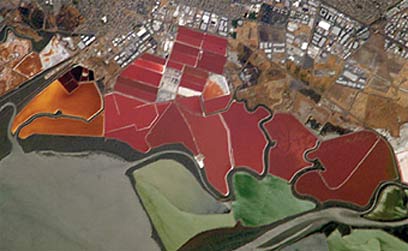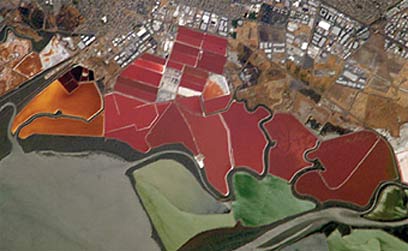A protein found in a salt-loving microorganism is able to transmit electricity very efficiently. Why did nature bother to give him this feature and then not use it?

Nature uses evolution to precisely engineer each biological component according to its unique function. Proteins, for example, should not have properties that are not necessary for their activity. But a team of scientists at the Weizmann Institute of Science discovered that a certain protein, found in the outer membrane of living cells, is capable of conducting an electric current, a feature that it is not required to use in its normal function.
The scientists came to the surprising finding in a series of experiments they performed on the bacteriorhodopsin protein they isolated from the outer membrane of Lobacterium salinarum, a salt-loving microorganism that, like plants, in the process of photosynthesis converts sunlight into materials used to produce the energy it needs to sustain life processes. In the retina of the eye there are similar proteins, called rhodopsins, which absorb the light and convert it, but the product of their conversion is not energy, but nerve signals. In both types of proteins - those found in the eye and those found in microorganisms - the origin of these conversions is located in a section of the protein called retinal derived from vitamin A.
The team of scientists, which included Prof. Mordechai (Mudi) Shebas, Dean of the Faculty of Chemistry at the Weizmann Institute of Science, Prof. David Kahan, from the Department of Materials and Surfaces, and Dr. Yongdong Jin and Dr. Nega Friedman from the Department of Organic Chemistry, were surprised to discover that The bacteriorhodopsin is able to transmit a current ten thousand times stronger than what could be expected to pass through a protein, and that the retinal segment in the protein plays an essential role in the conduction of the electric current.
The scientists found that the transfer of electrons is affected by the absorption of light. This finding is consistent with previous knowledge, that the absorption of light by the protein activates a kind of chemical switch: a chemical double bond found in retinal changes the shape of the molecule, transferring part of the molecule from one side of the bond to the other. The researchers found that after the change occurs in the retinal molecule, the protein's ability to transmit an electric current is doubled. When the scientists replaced the retinal with another molecule that is not able to undergo the chemical change as a result of absorbing light - the electrical conductivity of the protein did not increase.
These findings raise questions regarding the conduct of evolution. Prof. Shaves: "Why did nature bother to create and maintain such an efficient method for transferring electrons, and then not use it? Is this a coincidence, or did nature examine the possibility of using this property of the protein and then, for some reason, refrain from using it (there are known proteins, very different from bacteriorhodopsin, with a highly developed ability to transfer electrons)? And if indeed it was so, why was this possibility ruled out?" These questions preoccupy the scientists, and it is possible that future studies will be able to illuminate some of them.
Extreme lifestyle
Its official name is Lobacterium salinarum. This microorganism, which carries the protein bacteriorhodopsin in its membrane, does not belong to a type of bacteria, but is part of a special "order", called archaea. The members of this group are single-celled creatures, most of them, like Lobacterium salinarum, are very ancient from an evolutionary point of view, and live in many places characterized by extreme conditions: sulfur springs at the bottom of the ocean, oil layers in the earth's condensate, oxygen-deficient swamps, boiling water springs, deep in the Antarctic ice sheet , in particularly acidic or alkaline environments, and in the digestive systems rich in methane gas of animals.

Halobacterium salinarum, for example, lives and thrives in salt water. The colored proteins found in the outer membrane of Lobacterium salinarum sometimes give the water of the salty lakes where the microorganism lives an oval or pinkish hue.
https://www.hayadan.org.il/BuildaGate4/general2/data_card.php?Cat=~~~606800075~~~152&SiteName=hayadan
